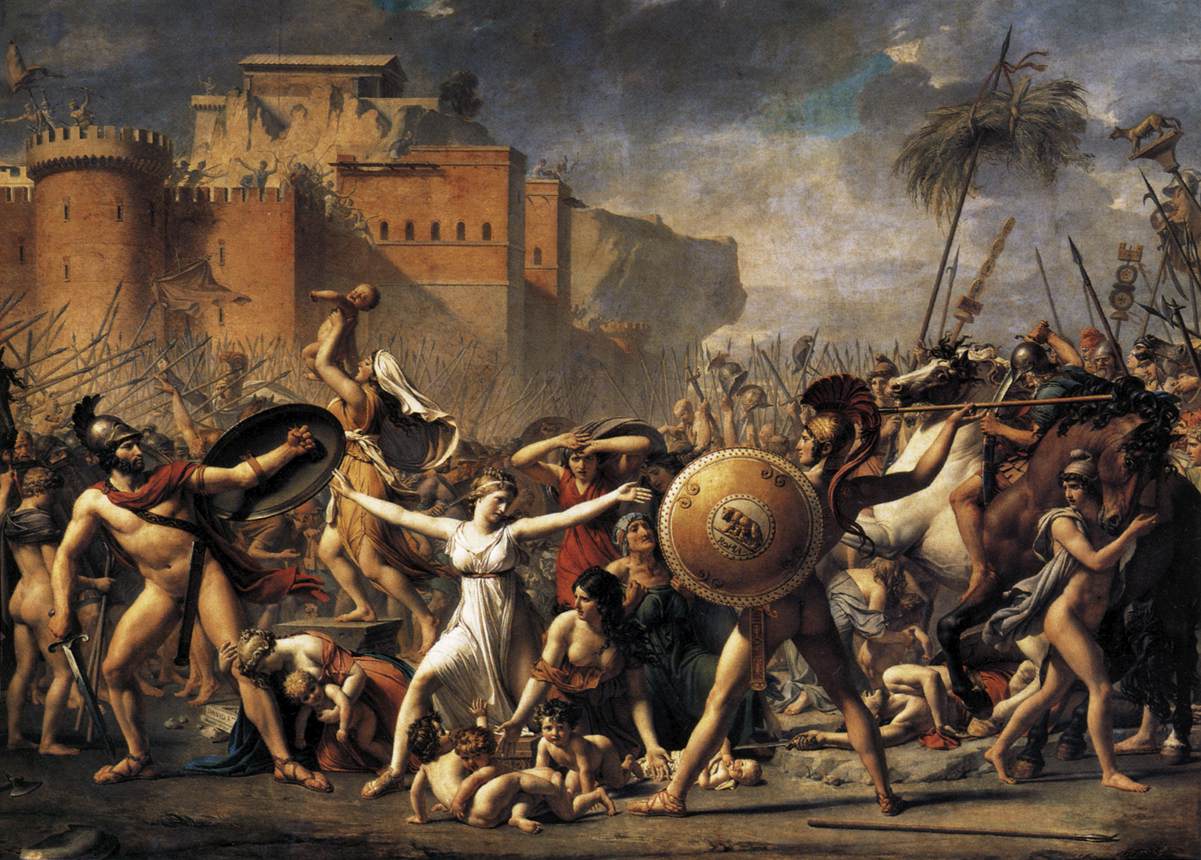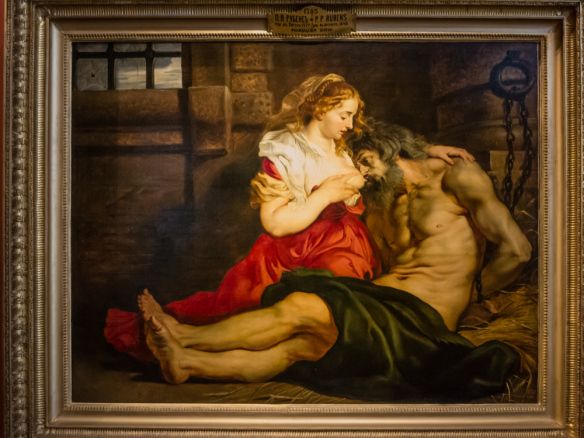Testing of Pigments

"The Sabine Women", by Jacques-Louis David
Testing of Pigments
Manufactures and customers alike will subject their pigments to a routine series of examinations and tests. These tests aim to create a product that's not only uniform, but capable of creating the affects required by the art world. It must be noted that these tests will only produce accurate data when preformed by experienced technicians, and that most modern industrial requirements often call for even more accurate and elaborate equipment than what can be obtained by these simpler methods. However if you would like to start making your own paint an understanding and documentation of your results while you work out your process will be helpful, and your goals should be staying focused on creating a product that preforms, if not better, comparatively to those already on the market.
Color Rub-outs
A weighed amount of the standard pigment is placed on a slab of plate glass, or smooth stone, and sufficient linseed oil is added to produce a stiff paste when rubbed with a steel spatula or palette knife. The oil is added drop by drop, the number of drops being noted. Care is taken to gather the paste neatly into a small area of the slab, and to rub no more than what is necessary to create a smooth, uniform paste. The paste is then rubbed with a glass muller, using a uniform, slight pressure and a back-and-forth, somewhat circular motion, the idea being to grind over as much as possible the entire amount of paste with each rub. After twenty-five rubs the paste is then scraped from the muller and slab, gathered into a pile, and given twenty-five more rubs. The process is then repeated using the same amounts regardless of how it turned out. The two are then spread out in a thin layer on glass, their edges just slightly touching, and viewed under daylight. A great many variations of this process are adopted and in use by various chemists. It results will indicate the consistency of the pigment in its ability to create uniform product.

"The Death of Verginia", by Taras Shevchenko
Strength
One tenth of a gram of the pigment is rubbed up with two grams of a standard pure zinc oxide, as described above. For the more powerful colors such as phthalo blue the portions are made at 50 to 1 instead of 20 to 1. Of course these figures are only given as a guild and are varied depending on the needs of the artist. The reductions should be enough to be determined the tone qualities and any differences in strength to easily be noticed. Though in the case of some of the weaker pigments this process shouldn't be taken to a point where they become so pale than an estimation of their strength is hard to be determined. Strength rub-outs are always thoroughly mulled, and if any streaking is present its given further mulling until it reaches a smooth, consistent, and uniform hue is achieved.
Draw-downs
Another method of testing the relative color and strength of artist paints, which can be done on tube colors as well as dry pigments, is the one most commonly preformed by the printing-ink industry. Draw down tests value the undertones as well as the top tones or body color. It begins by mulling dry pigment into oil much in the same fashion as described before, or samples may be squeezed from two tubes of pre prepared paints. These samples are then placed on a flexible wall scraper. The handle is grasped in such a manner that when the blade, loaded at the tip, is drawn across a pad of white bond paper the pressure can be highly controlled. The first part of the stroke is light, adding a thick layer of paint to the ground. As you work down more pressure and a quicker swipe is applied till only a thin staining of the paper is produced. By holding this sample against light a comparison of the two can be made, and will help to identify any difference in color, clarity, strength, hiding power, ect. A good example of the uses of this can be seen by taking a student grade alizarin or burnt sienna and making this comparison to more professional quality paints of the same hue. These two colors change wildly when the cheap fillers are added to them, and a prime example of why cheap paints are considered inferior.

Peter Paul Rubens (1577 Germany – 1640 Antwerp) “Roman Charity (Cimon and Pero)”, oil on canvas, acquired in 1768 from the collection of Count C. Cobenzl, The Hermitage Museum, St. Petersburg, Russia
Dry Pigment
The comparison of dry pigments is achieved by placing small piles of the two pigments side by side. Then you will cover them with a piece of paper or cellophane, and then applying firm, even pressure with a palette knife. When the compressed piles are viewed in daylight any difference in the two can easily be seen. A small drop of turpentine placed between the two will bring out any differences in tone when mixed with white or inert pigments.
Fading and Yellowing
As I've described in a previous post the exposure to light can chemically alter the paint. Each pigment withstands this abuse differently, but its commonly accepted that if the full strength test is a pass pigments such as tints that resist weathering less can also be considered a pass. As described before this typically consists of exposing the pigment to intense ultaviolet light for a short time. Short time exposure to ultraviolet light can be used to accelerate the affects commonly seen with years of abuse of daylight.
Finally I like to clarify, the use of the word daylight is used in the since of the light emitted by the sun. Daylight lamps are not considered an acceptable substitute.
If your an artist make sure you get yourself involved with my Weekly Sketch Contest!
https://steemit.com/art/@dcrockete/2nd-weekly-sketch-contest
Previous Educational Posts
History of Art
https://steemit.com/art/@dcrockete/the-history-of-art
History of Tempera Painting
https://steemit.com/art/@dcrockete/tempera-painting
History of Oil Painting
https://steemit.com/art/@dcrockete/the-history-of-oil-painting
The Artists Responsibility of Control
https://steemit.com/art/@dcrockete/the-artists-responability-of-control
Introduction to Pigments
https://steemit.com/art/@dcrockete/introduction-to-pigment
Furthermore on Pigments
https://steemit.com/art/@dcrockete/furthermore-on-pigments
Choosing Your Palette
https://steemit.com/art/@dcrockete/choosing-your-palette
Properties of Pigment
https://steemit.com/art/@dcrockete/properties-of-pigments
Continuation Properties of Pigments
https://steemit.com/art/@dcrockete/continuation-properties-of-pigments
Art Supplies
https://steemit.com/art/@dcrockete/art-supplies
Your continued support is much appreciated. I'm glad you guys are enjoying this journey through education of the arts as much as I am. In arts recent past "education" has been a very low priority for many artists, limited to only learning the application and completely ignoring the technical. My goal with these posts are to change that idea as its clearly having an affect on the art community.
Again a great read, very informative. I have nominated you for a whaleshare :) fingers crossed you get it!!
No way!!! Thank you so much. It's comments like these that are giving me the motivation to keep going with this. It's a lot of fun and I'm glad your enjoying it too.
Of course, you are clearly very passionate about what you do and it shows :)